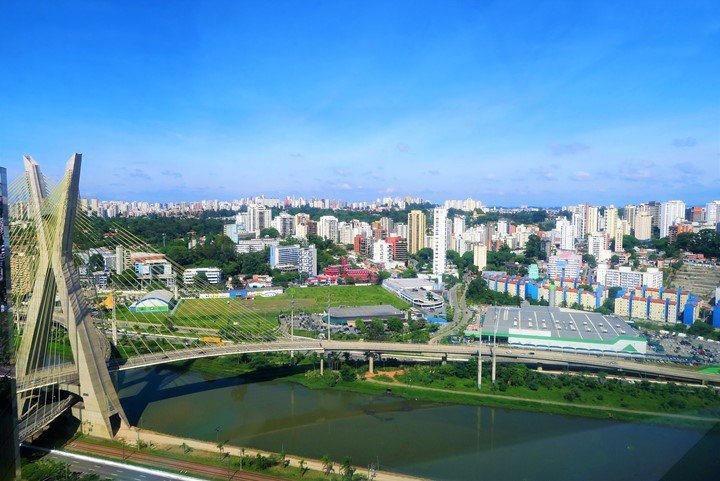A drawbridge is a bridge that is not attached to both ends. It can be moved upwards or sideways hence preventing people from crossing. These movable bridges are constructed over time, and thus they can be easily raised or lowered. Besides allowing people to cross to the other side, these bridges serve many other purposes. In most cases, these bridges are operated by chains or string ropers attached at one end of the bridge. However, they have disadvantages and advantages, which are discussed below.
Pros of Drawbridge
1. Opens waterways: unlike other permanent bridges, which do not allow opening and closing of waterways, drawbridges open to allow water vessels to pass. In addition, small-sized boats can pass under it if the bridge is not completely opened.
2. Fewer accidents: if the water vessel passes to the other side of the bridge, the Drawbridge is fully opened. The bridge is placed several meters above the water body. It helps small-sized water vessels to pass to the other side without causing any collision even when the bridge is closed. It helps avoid accidents and collisions when the boat contacts the bridge’s structures.
3. Save on cost: Drawbridge helps to minimize the construction cost. Drawbridges are flexible; they can be easily moved to allow passage of both people and water vessels. By doing so, the cost of constructing a separate people and boat passage is reduced. The cost of maintaining the bridge is also lower than other vertical bridges.
4. Time required passing: The Drawbridge reduces the passage time. Vessels crossing to the other side of the bridge do not have to wait long. The bridge can be opened partially to allow them to cross, hence saving time. Small-sized vessels do not have to wait for the bridge to be opened to go underneath the bridge. Similarly, people crossing the bridge are favored as they can be closed upon their request.
It saves the time they would waste waiting for the bridge to be opened.
5. Simple to construct: Constructing drawbridges is relatively fast as simple. The construction process can be completed within a short period. Readily available tools and equipment are used in constructing the bridge’s structure. Their design is affordable, and thus low resources and tools are required.
6. Easy opening and closing: The drawbridges have recently been equipped with opening and closing machines. These machines make it easy to open and close the bridge when required. Unlike other bridges that are manually opened, drawbridges can be opened automatically.
7. No maximum height: The Drawbridge has no rooftop, so there is no maximum height. It helps transport tall structures from one side of the bridge to the other. Secondly, the bridge allows boats of any height to pass as it can be opened and be closed.
8. Suitable for the small gap: The Drawbridge seems to be the best option in case the gap involved is small. These bridges can link two points and at the same time allow passage of water vessels. It makes this technique of making bridges the best of all.
9. Limiting people from crossing: in case of the spread of a contagious disease or any other pandemic, drawbridges can be used to control the movement of people. When the bridge is opened, people from one side cannot cross to the other side.
10. For Security purposes: drawbridges were important in protecting villagers from external attacks in the old days. In case of attack, the bridge can be opened, thus preventing attackers from invading the community. Therefore, it served as a barrier from neighboring attacks.
Cons of Drawbridge
1. Requires strong bridge chains: The bridge chains hold the bridge when it is closed. In case of chain failure, the bridge remains closed, which may alter with the movement of water vessels. Therefore, strong chains are needed to hold the weight of road vessels. These chains are expensive to acquire, which may increase the construction cost.
2. Only limited weight passes: Unlike permanent bridges capable of holding large tones of weight, drawbridges can carry specific weight. When a lot of weight is exerted on the bridge, it is likely to be damaged.
3. Time to close and open causes traffic: these bridges are passage for both water and land vessels in most cases. As the water vessels use the bridge (open mode), there is a traffic jam on the land, and when the land vessels are using the bridge, the water vessels wait for the bridge to be opened.
4. Malfunction of bridge moving parts:
the moving part of the bridge is the main essential component of the bridge. They facilitate the opening and closing of the bridge. In case of failure, the bridge remains closed until they are repaired.
5. Maintenance cost is higher: to satisfy users, these bridges have to be monitored and be maintained from time to time. The movable parts require regular maintenance to ease the process of opening and closing the bridge. Metals and other materials making up the bridge must be checked frequently to avoid accidents that may occur.
6. Wearing out bridges: the drawbridges weaken as they get older. They are likely to wear out due to rust, and therefore, replacement is vital. It increases the total maintenance cost of the bridge since most of the materials used in construction are steel-based.
7. Placement options: This bridge has a limited placement option. They are only used where a water body is underneath, and a bridge is needed to pass over the water body.
8. The length of the bridge: length of a bridge is the main determinant of the kind of bridge to select. Drawbridges are limited to only small-sized areas. They connect two areas that are geographically close to each other.
9. Bridge staff: Unlike other bridges, drawbridges require a staff that coordinates the opening and closing of the bridge. As a result, it can cost a lot of money and take time.



